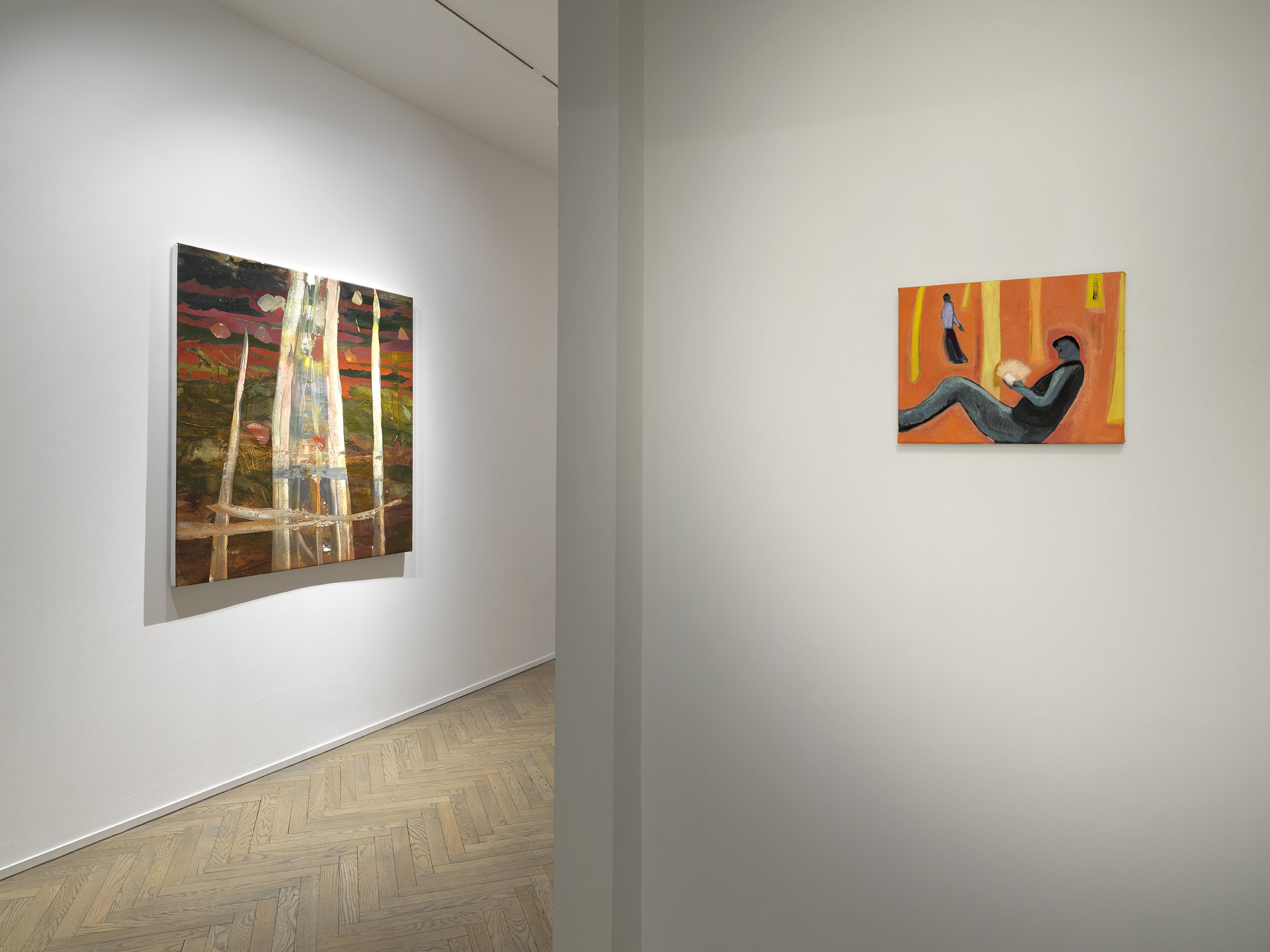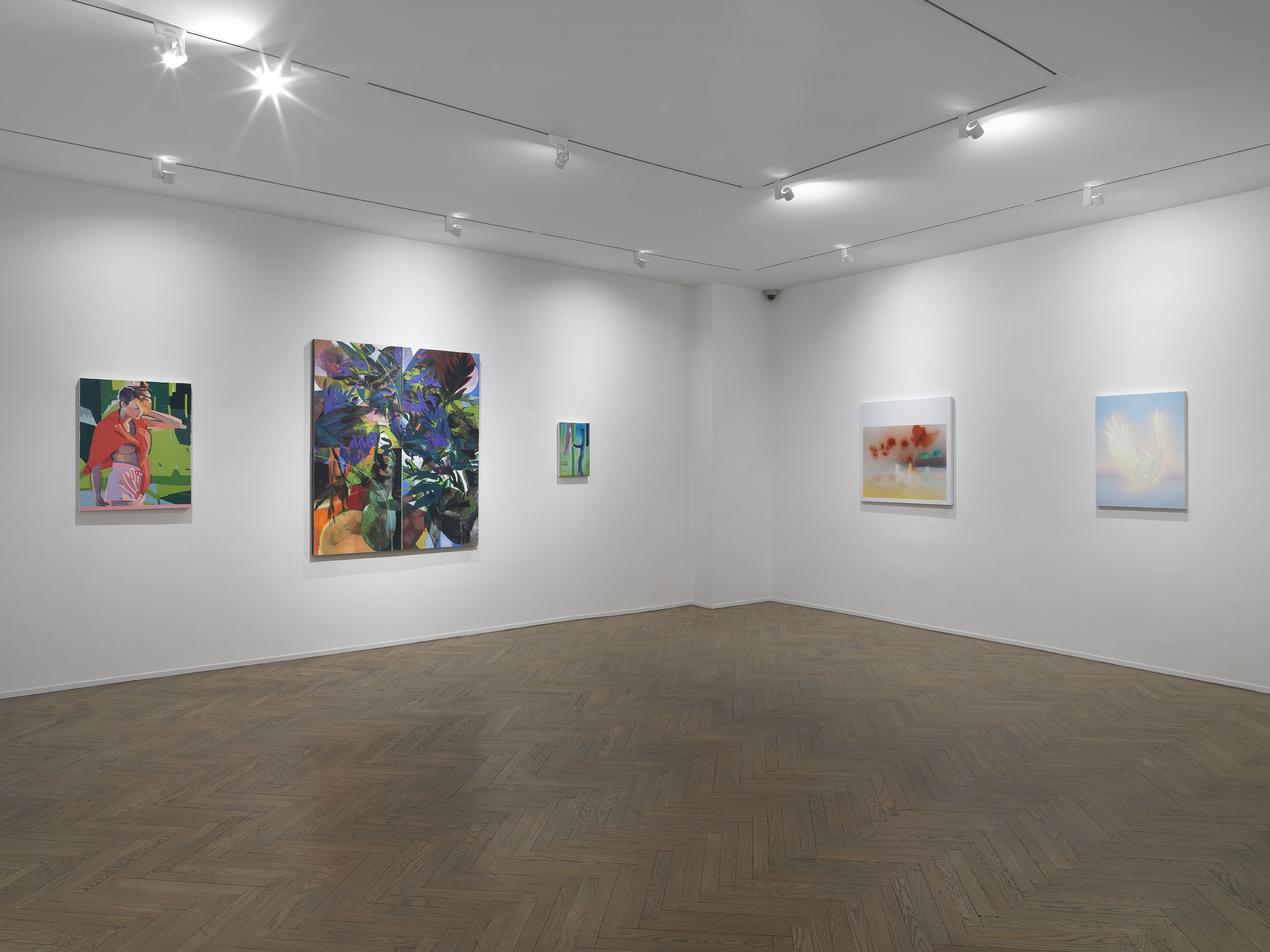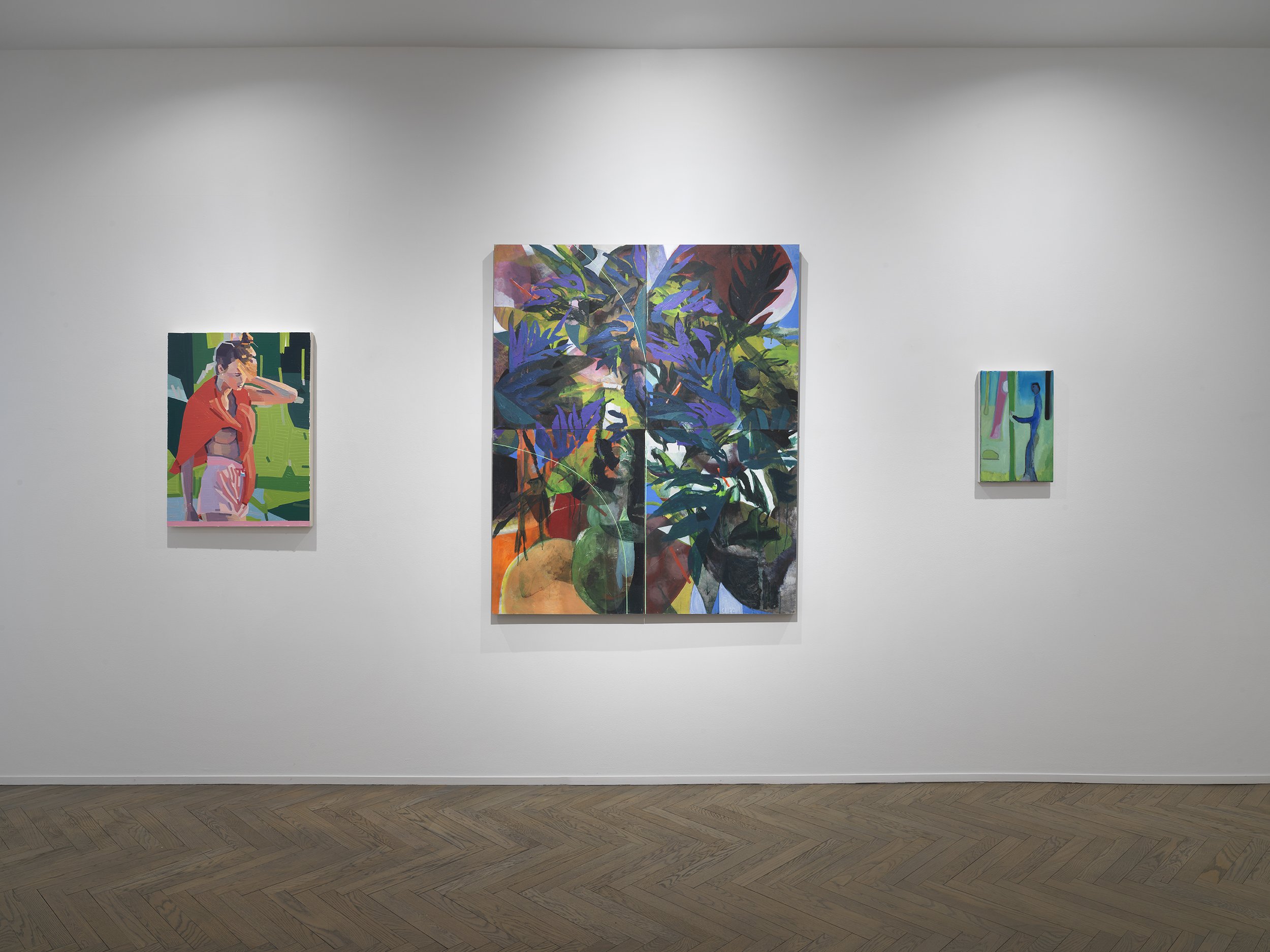The Natural World: Part II
Alexander Berggruen Gallery. NY
This group show, presented in two parts, explores how the natural environment and the flora of domestic settings have evolved in contemporary painting, drawing, and sculpture. Certain works explore more traditional depictions of landscape and plant life, while others verge on surrealist adaptations of our known world. Part I explored historical works over the last six decades to generate rich context for the contemporary works that will be shown in Part II. In this second iteration, contemporary artists expand the vocabulary of painting the natural world as they record their own histories, transform their memories of landscape into unreality resembling reality, utilize the digital tools and aesthetics at their fingertips, and project psychological interpretations onto land.
The Natural World: Part II includes diligent notetakers of color, form, and culture such as Anna Valdez, Rebecca Ness, Che Lovelace, Caleb Hahne Quintana, and Ross Taylor. Valdez records configurations of objects and patterns in her studio with fresh air from her house plants and her own cultivated flowers. Similarly balanced between nature and human intervention, Ness’s Shoes and socks in the lakeside grass captures a moment of reprieve on a trail after a long hike. Living and working in Trinidad, Lovelace celebrates life and culture in the Caribbean nation through his Cubist and Expressionist lens. Meanwhile, Hahne Quintana recreates the palettes that emerge on the West coast in the midst of devastating forest fires. Taylor’s paintings aim to present multiple perspectives of a single location at once, like flattening the globe onto a two-dimensional map.
This exhibition features artists who depict imagined landscapes including Cara Nahaul, Freya Douglas-Morris, Madeline Peckenpaugh, Diana Al-Hadid, Sholto Blissett, and Emma Webster. When painting, Nahaul portrays memories of how places felt to her, in this case, Mauritius, Africa. Douglas-Morris constructs scenes where a tree can be both sapling and mature, and pine needles may fall from a Sycamore as incense for the painting.
Peckenpaugh builds space in reaction to each layer of paint, constructing and editing until a vast expanse surfaces. Further, Al-Hadid’s gestural forms create abstract allusions to the known environment. Although Blissett’s Garden of Hubris XXVIII grounds a viewer in a traditional cove of golden boughs and Arcadian idylls, beyond exists what the artist explains as: “an uncanny combination of plant and stone, standing as a temple to humanity’s artistic crafting of nature to his will. Or so it seems. For the narrative continues into the background, where the presence of the natural world is resistant to our carving stands: the mountains.” A carver of form in virtual reality, Webster designs unreal sets where nature performs theatrical displays.
As evidenced by Webster’s approach, some artists’ processes and aesthetics are influenced by technology as they explore new devices or find inspiration from the proliferation of circulating imagery, including Mauro Bonacina, Guy Yanai, and Vicente Matte. Bonacina casts a wide net to collect images across the digital sphere from sources such as Vincent Van Gogh to Burning Man. The artist digitally manipulates the images, prints them on canvas, and then paints over them, resulting in loose references to recognizable subjects. Yanai also sources images online as a means to travel to places that he’s never seen in real life, producing what he describes as: “nostalgia for the never experienced.” Further exploring our connection between the natural and the technological are two paintings in this show by Matte, which feature a prominent figure absorbed by their phone screen and surrounded by the woods. Here, the artist questions: if the natural world is “echoed in the digital world,” then can the meanings and metaphors ascribed to the forest also be felt through a phone screen?
Landscapes may become emotional vessels in this exhibition, as felt in paintings by Greg Ito, Scott Kahn, Sanam Khatibi, Brittney Leeanne Williams, Damien H. Ding, Nicasio Fernandez, and Madeleine Bialke. Ito considers the landscape a “cerebral space” to communicate symbols and
narratives. In Kahn’s 2021 Autumn Sunset, the artist repeats bulbous forms in the field, trees, and clouds in reference to persistent waves of emotion. Khatibi depicts nature to set the stage for her figures to explore primal impulses. As Williams interweaves the body and the landscape, “the Mojave desert, my grandmother’s garden, and the shoreline all become visual placeholders for spiritual, emotional, and psychological forces that take place within the body,” according to the artist. Similarly, the rolling desert hills in Ding’s Looking for the desert oscillate between appearing as sand dunes and a hand. In Bialke’s paintings, nature becomes personified as her curves become more pronounced, rounded, and fleshy. Fernandez approaches the natural world with “poetic absurdity that explores an emotional landscape,” resulting in a playful yet surreal reminder to consider nature’s gifts through the lens of a flower, moonlight, and personified tree.
United by their exploration of the natural world, the artists in this group show respond to the present moment by capturing the potential in the land that surrounds them or exists in their minds.
Alexander Berggruen Gallery. 2022
Installation Views (Selected)
Photos: Dario Lasagni
Selected Works
Forest, 2022
Oil on canvas. 11 1/8 x 14 1/8 in. (28 x 36 cm)
Moon among the trees, 2022
Oil on canvas. 11 1/8 x 14 1/8 in. (28 x 36 cm.
Photos: Dario Lasagni






